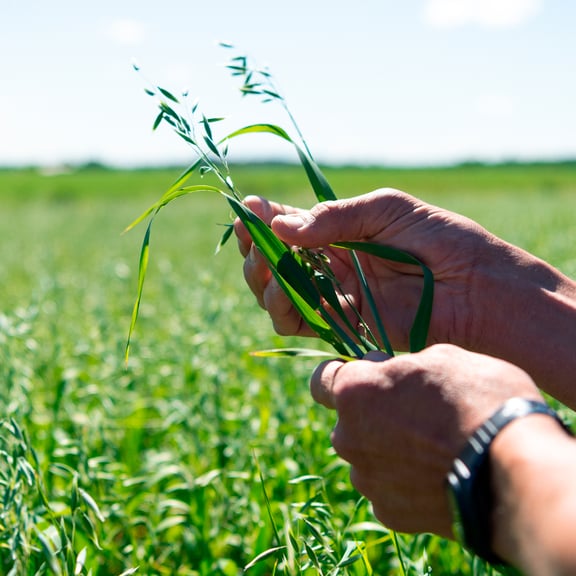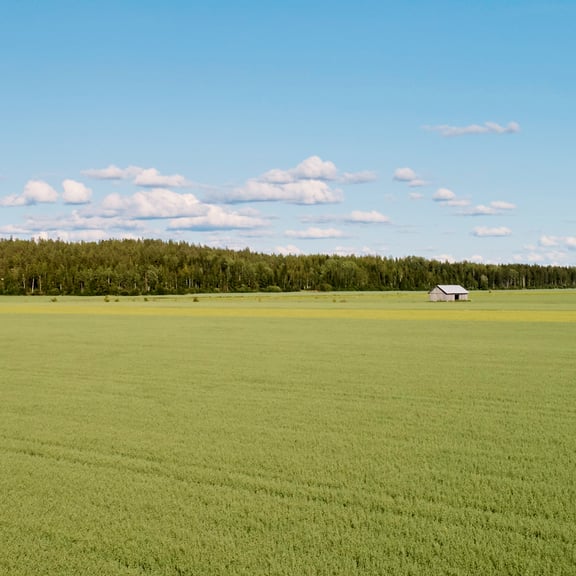Although holidaymakers are delighted with the red-hot maps on the weather forecasts, oat farmers are desperately hoping for rain. Unlike other crops, oat in particular thrives in cool and rainy weather, when it produces fantastic harvests in comparison to dry growing seasons. An exceptionally warm and dry early summer has also parched the fields at Hölsö farm. The growing season has been everything we didn’t want: a cold and dry May followed by a hot, dry June. “We have only had 5 millilitres of rain since May, and that’s far too little,” laments farmer Mikko Hölsö.
Early expectations for the growing season were high due to the success of the previous year. Now the mood has changed, and farmers are hoping for enough rain even to grant them an average harvest. “A fantastic harvest is completely out of the question now, but if weather takes a wetter turn soon, there is still hope for an average harvest,” says Mikko.
The dry weather is most challenging for hard, clay land, which contained the least moisture even during the sowing season. If there is no rain all summer, the crops will ripen before their time and the harvest will be small in quantity. The grain will also remain small due to the dryness, and in the worst case it will no longer meet the size threshold for food-grade oats. “Even if it does rain, it will only affect the size of the grain now and not the quantity, because the crop decides on the number of grains during the early germination phase,” explains Mikko.
Dry weather often brings with it other problems, such as pest insects. Luckily, oat has rather few pest insects compared to oilseed rape and turnip rape. “Aphids are the most common issue during germination, when they spread barley yellow dwarf virus, which is the most common crop virus in Finland. Aphids are repelled using appropriate and tested pesticides,” says Mikko.
Pesticides are products that are approved for foodstuff production, such as various plant protection substances, which act as “vitamins and medicines” for crops. The pesticide content in ripe crops and finished grain products is carefully monitored. In Finland, the finished products are safe and free from excess residual pesticides.



